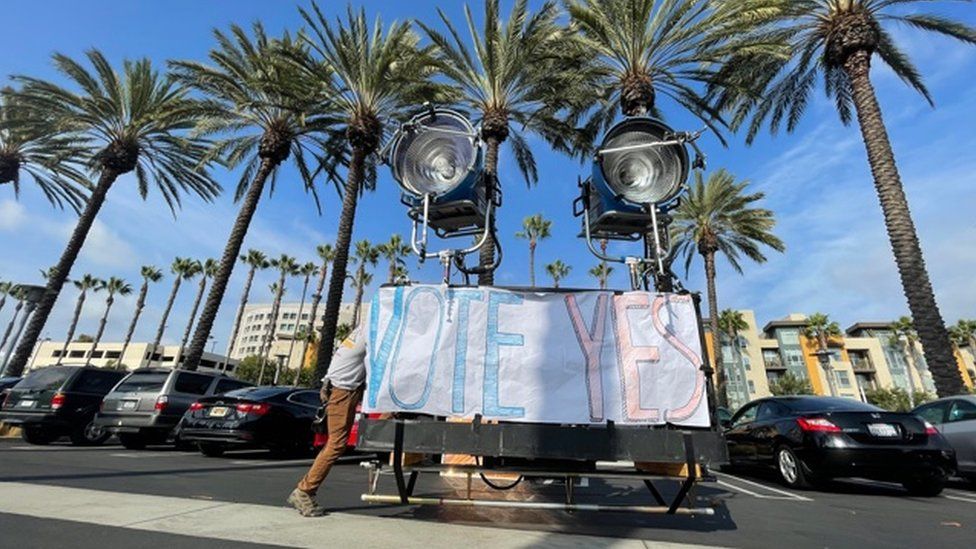More than 100,000 US workers will strike, or have threatened to in October, as a wave of industrial action dubbed “Striketober” hits America.
On Thursday, 10,000 workers at farm equipment maker John Deere walked out over pay and conditions.
Some 60,000 TV and film crew workers are set to strike on Monday, while 24,000 nurses could also protest.
It follows a rise in US union activity after decades of decline, as staff demanded better rights in the pandemic.
Employers have also found themselves on the back foot amid a labour shortage that has forced them to push up wages for the lowest paid.
Thousands of other workers were already on strike in October, including 700 nurses in Massachusetts, 2,000 New York hospital workers and 1,400 Kellogg factory workers in Michigan, Nebraska, Pennsylvania and Tennessee.
Some 6,500 lecturers in California are also on the brink of a walkout.
On Thursday, left wing Democratic Congresswoman Alexandria Ocasio Cortez voiced her support for the action using the hashtag #Striketober which has gone viral.
10,000 Deere & Company workers based mainly in Iowa and Illinois walked out on Thursday, in what is the largest US strike since 2019.
They have rejected a new contract they say insufficiently increases wages and weakens pension rights. Deere said it was determined to reach an agreement that “put every employee in a better economic position”.
In addition, more than 24,000 nurses and other healthcare workers in California and Oregon voted on Monday to allow a strike, after pay negotiations with the private hospital group Kaiser Permanente stalled.
Among other things, they want a 4% annual pay rise and longer breaks to tackle pandemic-related burnout. Kasier says it hopes to resolve the matter swiftly.

Meanwhile, many US TV and film studios will stop work on Monday as 60,000 film and crew workers go on strike. It would be the biggest labour walkout in Hollywood since World War Two.
Their union – the International Alliance of Theatrical Stage Employees – accuses Hollywood giants such as Warner Bros and Netflix of failing to give workers proper breaks. Employees frequently work 12-hour days – often without meal breaks, it says.
The Alliance of Motion Picture and Television Producers (which represents the big media firms) says it continues “to negotiate in good faith”.
Richard Bensinger, an organiser at Workers United, a union, said the wave of strikes was reminiscent of the 1930s, when industrial action was commonplace in the US.
“Similarly back then the vast divide between the wealthy and the working class became intolerable,” he told the BBC. “The decades-long decline of living standards for workers is not sustainable.”
But Gary Burtless of the Brookings Institution is more cautious about the impact of the strikes.
“The proportion of the American workforce that belongs to a union remains very low… The number of work days lost as a result of strikes has remained near historical lows since 2002.”
‘Pro-union president’
About a third of all US workers were in a union in the late 1960s, but that has declined over the decades because of anti-union laws and corporate crackdowns on organising.
Yet in 2020 the union membership rate edged up for the first time in years to 10.8%. Gallup also estimated 65% of all Americans approved of unions, the highest in over two decades.
It’s coincided with a swell of industrial action over the last 18 months, as Amazon warehouse staff to New York museum curators sought to unionise for the first time. There have also been months-long strikes by coal miners in Alabama and grocery workers at food giant Mondelez International.
They’ve been buoyed by the tacit support of Joe Biden – who has promised to be the most “pro-union president you’ve ever seen” – and a more left-leaning Democratic party.
BBC



